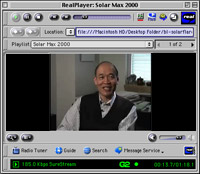In order to understand the RHESSI mission, it's important to know something about the scientific topics below. Each link will take you to a list of resources that will provide you with background information helpful in understanding the RHESSI mission. Our materials and links will have easier, more general sources of information listed first (some of which are intended for students, but are fine for adults), and more difficult and specific sources will follow.

|
|
RHESSI Science Nuggets
 |
These nuggets display scientific results related to RHESSI observations on the Web. The nuggets are in principle helpful and explanatory, with links for further information, ideally written in such a way that any technically competent person can follow them. New nuggets are posted as they become available. Go to the nuggets page by clicking here. |
Non-Solar Science
RHESSI can also study astronomical objects other than the Sun.
For more information about what non-solar science
RHESSI can do, click
here.